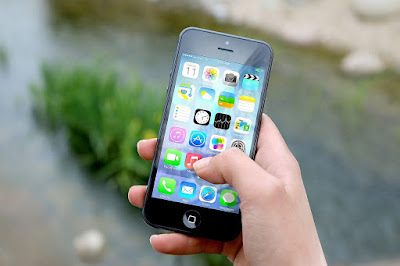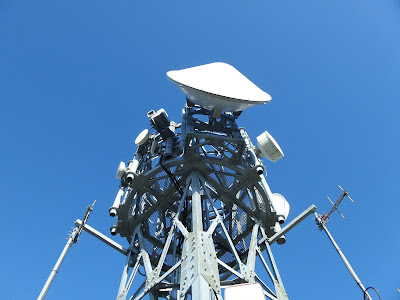Mobile communication
Mobile communication is the utilization of innovation that permits us to speak with others in various areas without the utilization of any actual association (wire or link). Mobile communication makes our life simpler, and it spares time and exertion.
A mobile telephone (likewise called mobile cell organization, PDA or hand telephone) is a case of mobile communication (remote communication).
It is an electric gadget utilized for full-duplex two-way radio telecommunications on a cell organization of base stations known as cell locales.
GSM (Global system for Mobile communication)
GSM represents Global System for Mobile Communications. GSM is one of the most broadly utilized advanced remote communication frameworks.
It was created in Europe during the 1980s and is presently the global norm in Europe, Australia, Asia and Africa. Any GSM handset with a SIM (Subscriber Identity Module) card can be utilized in any nation that utilizes this norm.
Each SIM card has an exceptional ID number. It has memory for putting away applications and information, for example, telephone numbers, memory for sending and getting its capacities and programming to the processor.
GSM innovation utilizes TDMA (Time Division Multiple Access) to help up to eight calls at the same time. It likewise utilizes encryption to make information safer.
The frequencies utilized by the worldwide standard are 900 MHz to 1800 MHz. Notwithstanding, GSM telephones utilized in the US utilize the 1900 MHz recurrence and are along these lines not viable with the global framework.
CDMA (Code Division Multiple Access)
CDMA code division is for various access. It was first utilized by the British Army during World War II. After the war, its utilization spread to non military personnel regions because of high help quality.
As each client gets the whole range consistently, the voice quality is high. Furthermore, it is consequently scrambled and hence gives high assurance against signal hindering and snoopping.
GPRS (General Packet Radio Service)
GPRS represents General Packet Radio Services. It is a bundle based remote communication innovation that charges clients dependent on the measure of information they send rather than the time-frame for which they are utilizing the administration.
This is conceivable in light of the fact that GPRS sends information to the organization in parcels and its throughput relies upon network traffic. As traffic builds, administration quality can diminish because of blockage, so it is coherent to charge clients as indicated by information volume.
GPRS is the mobile communication convention utilized continuously (2G) and third era (3G) of mobile communication. It guarantees speeds from 56 Kbps to 114 Kbps, albeit real speeds may shift contingent upon network load.
1G - First Generation
It was the original of phone innovation. The original of business cell networks were set up in the last part of the 70s to 80s with completely appropriate guidelines. It was presented by Telecom (today known as Telstra) in 1987, Australia obtained its first cell mobile telephone network utilizing a 1G simple framework.
1G is a simple innovation and the telephone normally had helpless battery life and the voice quality was huge absent a lot of security, and would infrequently encounter dropped calls.
These are simple telecommunications guidelines that were presented during the 1980s and proceeded until supplanted by 2G advanced telecommunications. The greatest speed of 1G is 2.4 Kbps.
2G - Second Generation
The mobile phone got its first significant update while going from 1G to 2G. The fundamental target of this age was to give secure and dependable communication channels.
It actualized the idea of CDMA and GSM. Given little information administration like SMS and MMS. The second era 2G cell telecommunications network was monetarily dispatched in 1991 by Radiolinja (presently part of Elisa Oyaz) on the GSM standard in Finland.
2G abilities are accomplished by permitting numerous clients on a solitary channel through multiplexing. Phones are utilized for voice just as information during 2G. Advances in innovation from 1G to 2G presented various essential administrations that we actually use today, for example, in light of SMS, inside wandering, telephone calls, call hold and charging administrations for example Charges dependent on significant distance calls and constant charging.Before the significant jump forward for 2G to 3G remote organizations, the lesser-realized 2.5G and 2.75G was a break standard that overcame any barrier.
3G - Third Generation
This age has set principles for most remote innovation that we know and love. The third era presented web perusing, email, video downloading, picture sharing and other cell phone innovation. Presented financially in 2001, the expressed objective for third-age mobile communications was to encourage more noteworthy voice and information limit, uphold a more extensive scope of utilizations, and upgrade information transmission at a lower cost.
The 3G standard uses another innovation called UMTS as its center organization design - the all inclusive mobile telecommunications framework. This organization joins parts of 2G networks with some new innovation and conventions to give altogether quicker information rates.
In view of a bunch of principles utilized by the International Telecommunications Union for mobile gadgets and mobile telecommunications use administrations and organizations agreeing to the International Mobile Telecommunications-2000 (IMT-2000) particulars. One of the necessities set by IMT-2000 was that the speed must be at any rate 200Kbps to call it as a 3G administration.
Backing for real time just as sight and sound administrations in 3G is more famous. In 3G, widespread access and conveyability is conceivable across various gadget types (phone, PDA, and so forth) 3G improved the proficiency of the recurrence range by improving how sound is packed during a call, so there might be more concurrent brings in a similar recurrence range.
The International Telecommunication Union IMT-2000 norm of the United Nations requires a fixed speed of 2Mbps for "valid" 3G and a mobile speed of 384kbps. The hypothetical greatest speed for HSPA + is 21.6 Mbps.
Like 2G, 3G developed into 3.5G and 3.75G as more highlights were acquainted with achieve 4G. A 3G telephone can't convey through a 4G network, yet new ages of telephones are basically consistently intended to be in reverse viable, so a 4G telephone can impart through 3G or 2G organizations Could ..
4G - Fourth Generation
4G is an altogether different innovation than 3G and was made basically conceivable because of the headway in innovation over the most recent 10 years.
It means to furnish clients with rapid, high caliber and high limit while improving security and lessening the expense of voice and information administrations, sight and sound and Internet over IP. Potential and current applications incorporate changed mobile web access, IP communication, gaming administrations, superior quality mobile TV, video conferencing, 3D TV, and distributed computing.
The significant procedures that have made this conceivable are MIMO (Multiple Input Multiple Output) and OFDM (Orthogonal Frequency Division Multiplexing). Two significant 4G principles are WiMAX (presently kicked out) and LTE (inescapable organization seen.
LTE (Long Term Evolution) is a progression of moves up to existing UMTS innovation and turns over Telstra's current 1800MHz recurrence band Will be changed out .. The 4G network has a most extreme speed of 100 Mbps or 1 Gbps for low portability communications when the gadget is running, for example, when fixed or running, the dormancy diminishes from about 300ms to under 100ms, and essentially less clog.
Occurs .. At the point when 4G first opened up, it was marginally quicker than 3G. 4G isn't equivalent to 4G LTE which is near gathering the measures of norms .. Downloading another game or HD To stream a TV show in, you can do it without buffering.
New ages of telephones are typically made in reverse viable, so 4G telephones can impart through 3G or 2G networks. All transporters appear to concur that OFDM is one of the primary pointers that an assistance can be genuinely advertised as 4G.
OFDM is a kind of computerized balance wherein a sign is partitioned into a few restricted channels at various frequencies.
Gracefully requires critical changes to the foundation being executed by specialist organizations as voice call circuits are turned on in GSM, UMTS and CDMA2000, so with the selection of LTE, transporters must restore their voice call organization Will need to design from.
Also, once more, we have fractional parts: denoting the change to 4.5G and 4.9G LTE (in a stage called LTE-Advanced Pro) gives us more MIMO, more D2D and 5G prerequisites while in transit to IMT-2020 Is accomplishing
5G - Fifth Generation
5G is as of now an age a work in progress, which plans to develop 4G.
5G guarantees quicker information rates, higher association thickness, much lower inertness, among different upgrades.
A few designs for 5G incorporate gadget to-gadget communication, improved battery utilization and upgrades in general remote inclusion. The greatest speed of 5G is as quick as 35.46 Gbps, which is multiple times more than 4G.
Key advances to watch: huge scope MIMO, millimeter wave mobile communications, and so forth Huge MIMO, Milimetre Wave, Small Cell, Li-Fi All new advancements from the most recent decade can be utilized to convey 10Gb/s to the client, concealed low inactivity, and association with at any rate 100 billion gadgets.
Permit .. Various appraisals have been made for the date of business presentation of the 5G network. The cutting edge Mobile Network Alliance feels that 5G ought to be turned out by 2020 to fulfill business and shopper needs.
Advantages of Mobile Communications
Mobile communication has the accompanying focal points.
Adaptability:
Wireless communication empowers individuals to speak with one another paying little heed to area. There is no should be in an office or some pay phone to pass and get messages.
Cost Effectiveness:
In remote communication, there is no requirement for any actual framework (wire or link) or upkeep practice. In this manner, the expense is diminished.
Speed:
Improvements can likewise be found in speed. There was extraordinary improvement in network availability or access exactness and speed.
Availability:
Easy admittance to far off regions is conceivable with the assistance of remote innovation. For instance, in rustic regions, online instruction is presently conceivable. Educators or understudies at this point don't have to make a trip to remote to show their exercises.
Steady availability:
Frequent network guarantees that individuals can react to crises moderately rapidly. For instance, a remote gadget, for example, a mobile can guarantee you constant network, in spite of the fact that you can't move all around or while voyaging, while a wired landline can't.
Read more>> WLAN
Bluetooth Technology
Programming model
Capacitor


No comments:
Post a Comment